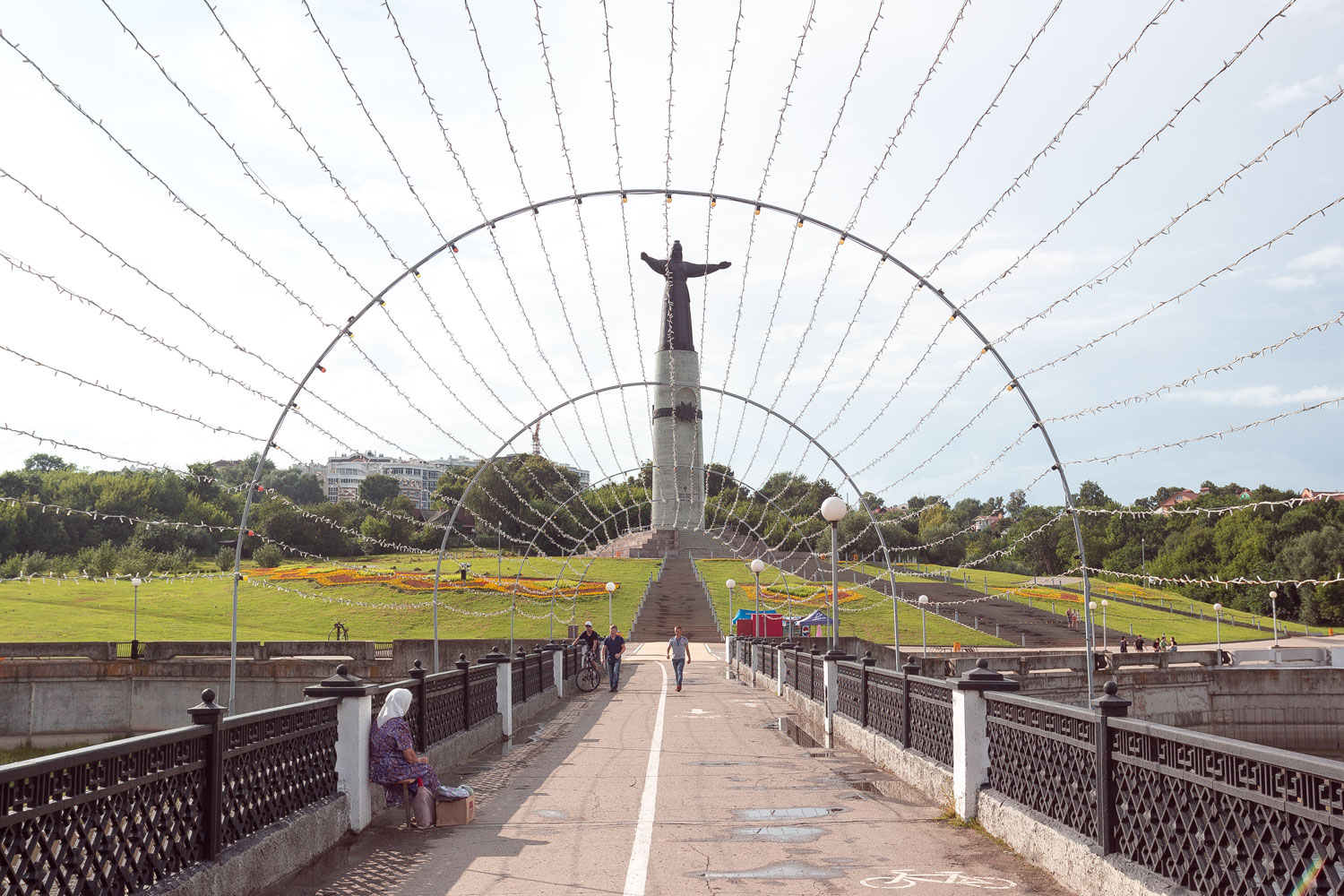Cheboksary
Arriving at an affordable hostel in Cheboksary. Risky, yes. I arrive and discover that the hostel is located in a basic panel building.
It’s okay, it happens. This is Russia, after all.
I approach the hostel, climb up the broken staircase from the backyard, and pull the door — but the door doesn’t open. I pull it again — and once again, the door doesn’t open. “Ah, it’s closed,” I think.
“If the door is closed, you need to ring the bell, and they will definitely open it,” I remember the words of the psychotherapist. I reach for the doorbell and discover a note:

Judging by the marker’s color, the sign has been hanging on the door for about two years. Quite impressive! Anticipating an incredible story about the Cheboksary hostel, I happily dial the phone number indicated in the note — and my expectations are met!
“Have you arrived already? We just went to Volga for some barbecue,” a drunken voice responds over the phone.
“Please continue,” I reply, glowing with joy.
“We’ll be back in an hour and a half, we’ll open up!”
“Yes! Yes! More!”
“Wait a bit. What about the rain? There’s a shop nearby.”
“Great, I’ll do just that! Thank you! Thank you for the story!”
⁂
Despite the sheer idiocy with hotels (the story repeated twice), Cheboksary turned out to be quite a charming city.
Buses here run from Red Square directly to the airport.

And they build in lightsabers from Star Wars into pedestrian crossings.
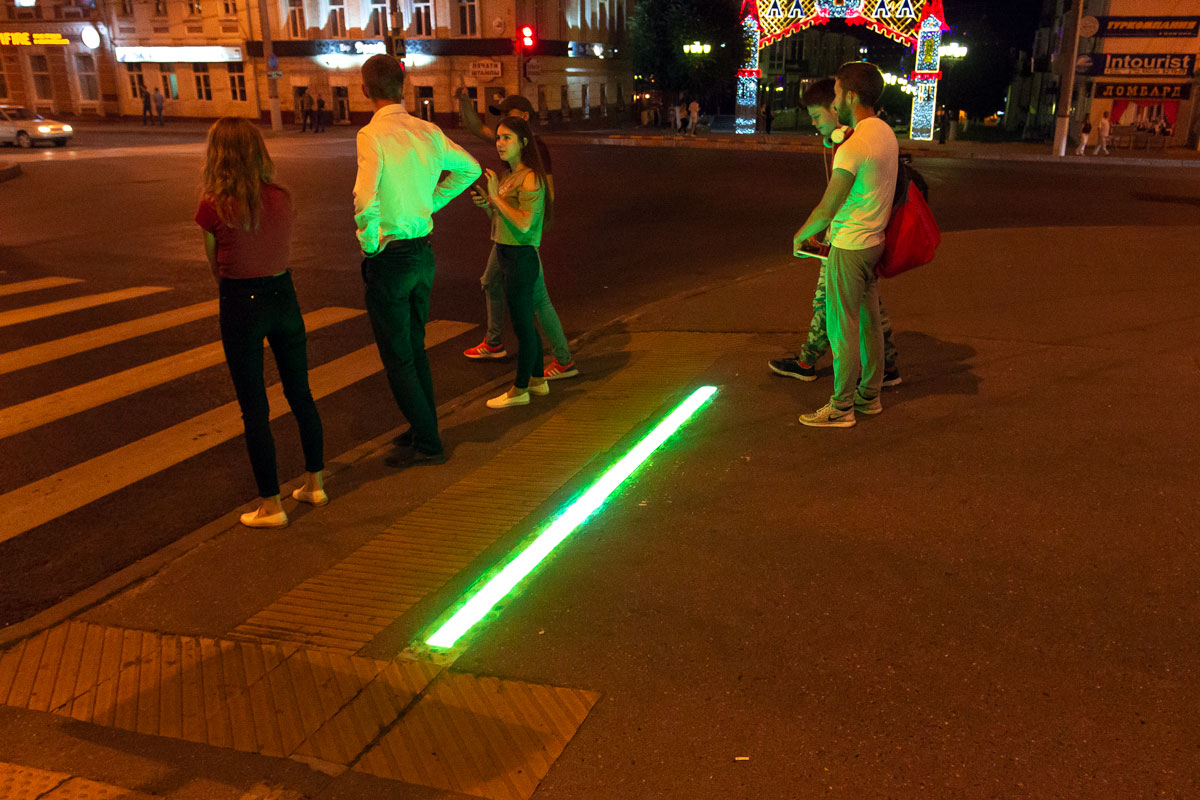
Cheboksary is the capital of the Chuvash Republic, where, it turns out, there is its own language called Chuvash. It’s always surprising: from a distance, it seems like everyone in Russia speaks Russian, but in reality, this country has a significant number of local languages and dialects.
In Chuvash, mainly the names and signs of government institutions are duplicated. The Chuvash people themselves rarely speak it, despite the fact that the language is taught in schools.
The inscription “паян | ыран” means “today | tomorrow.”

This is a sign on the building of the Chuvash Drama Theater.
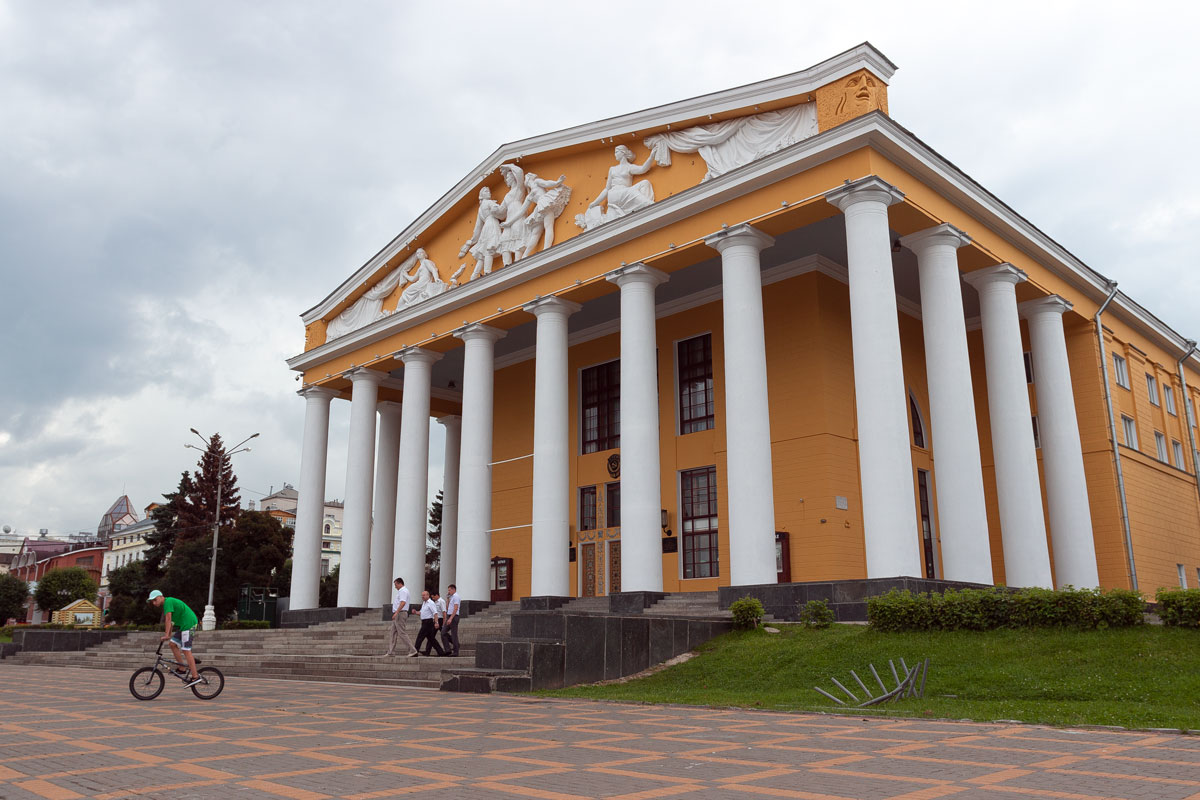
“The editorial office of the All-Chuvash national newspaper.”
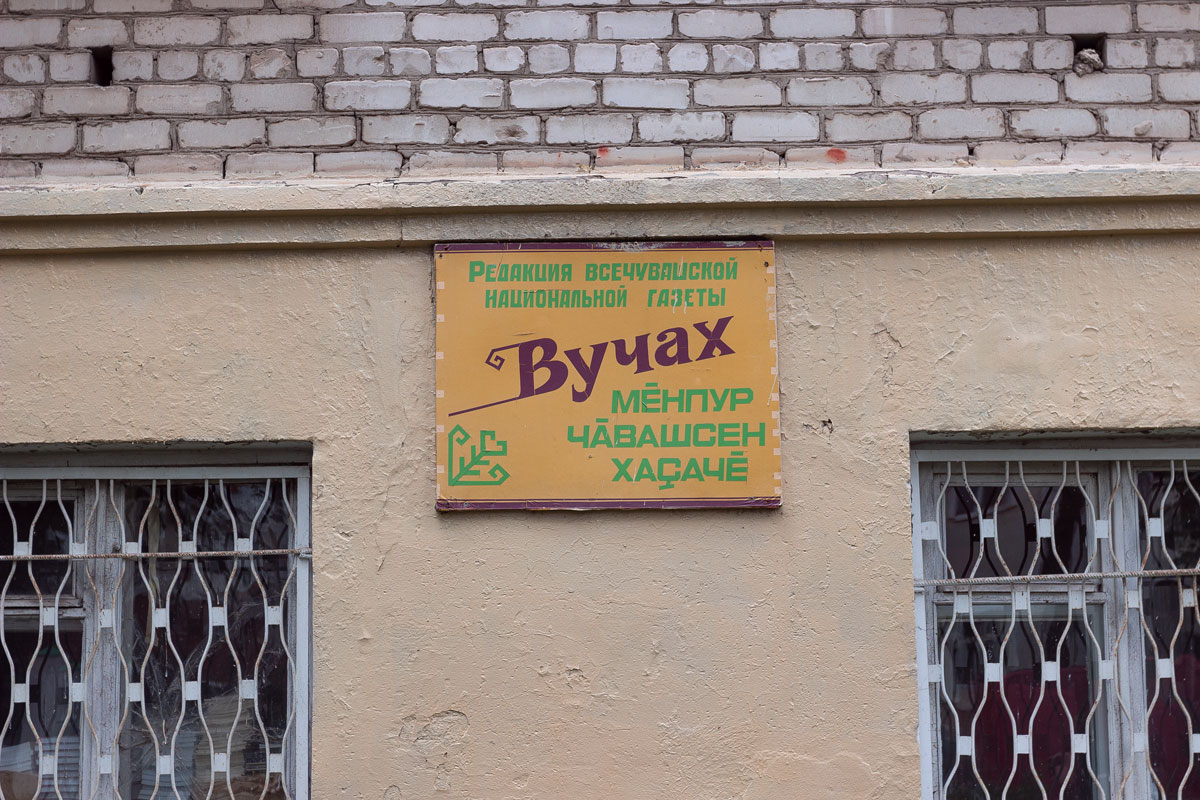
Cheboksary Savings Center. Tea World. Einstein Museum. Yes, a typical provincial city.
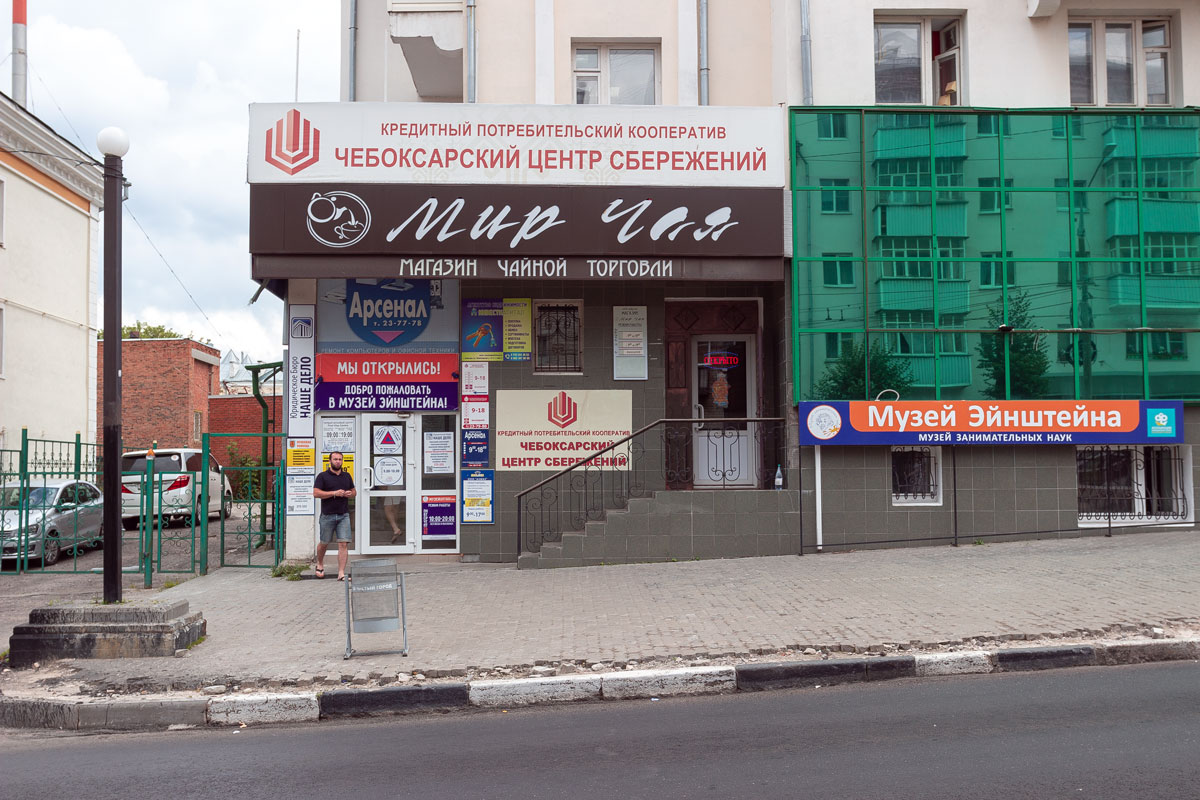
In every provincial city, there is one main street where they try to dump everything that exists in the republic. As a result, it becomes a local crappy “Arbat” with monstrous plastic structures.

Cheboksary even manages to occasionally experience small traffic jams, despite what might seem.
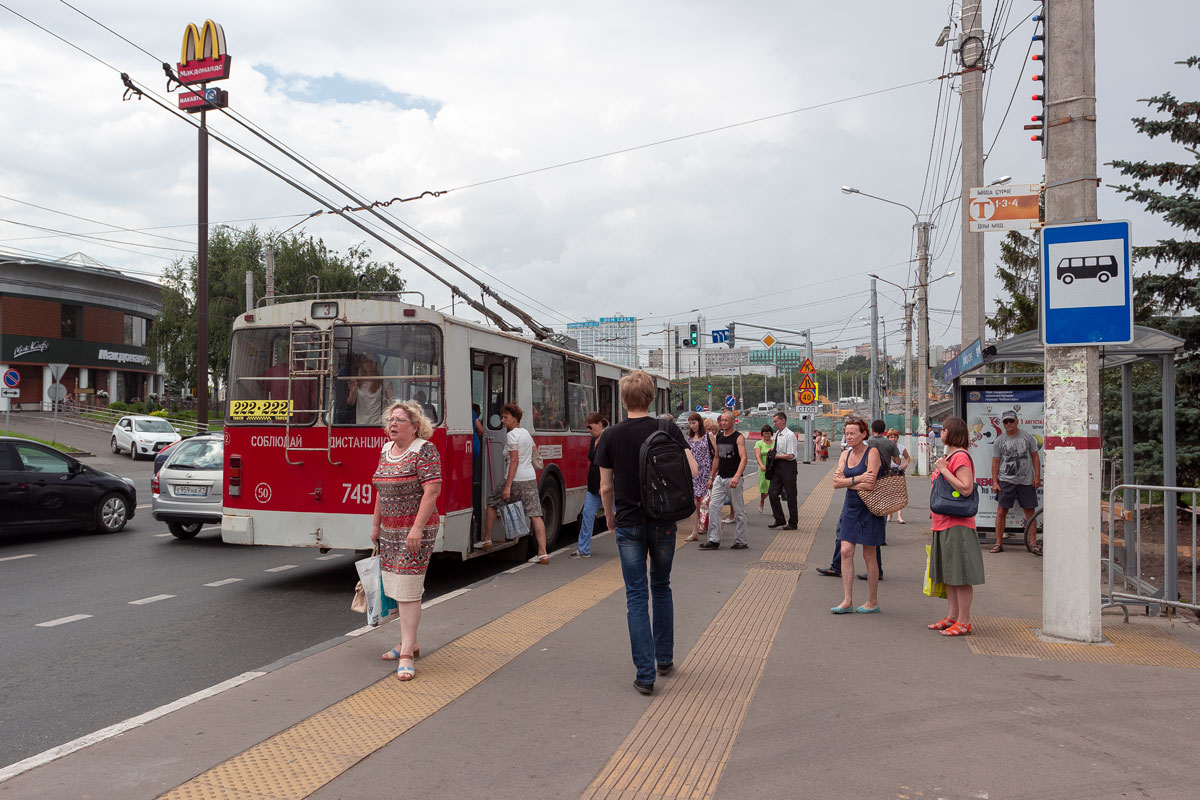
Of course, if you turn into the courtyards, you almost immediately encounter crappy urban planning. Levitating pipes throughout the entire yard, overgrown wildflowers, crumbling asphalt, and worn-out footpaths — all painfully familiar in dozens of similar cities in Russia.
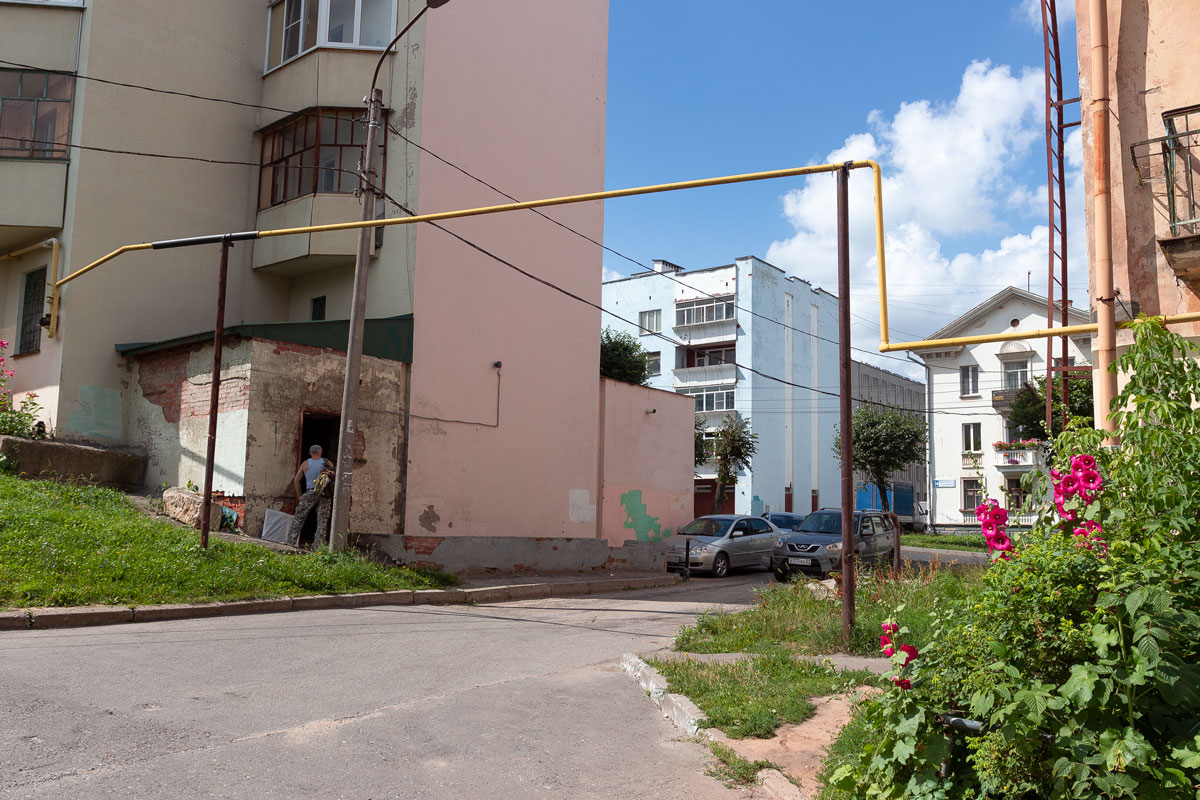
On some houses, you can sometimes come across something resembling a national pattern. The design of the lampposts also incorporates local traditions.
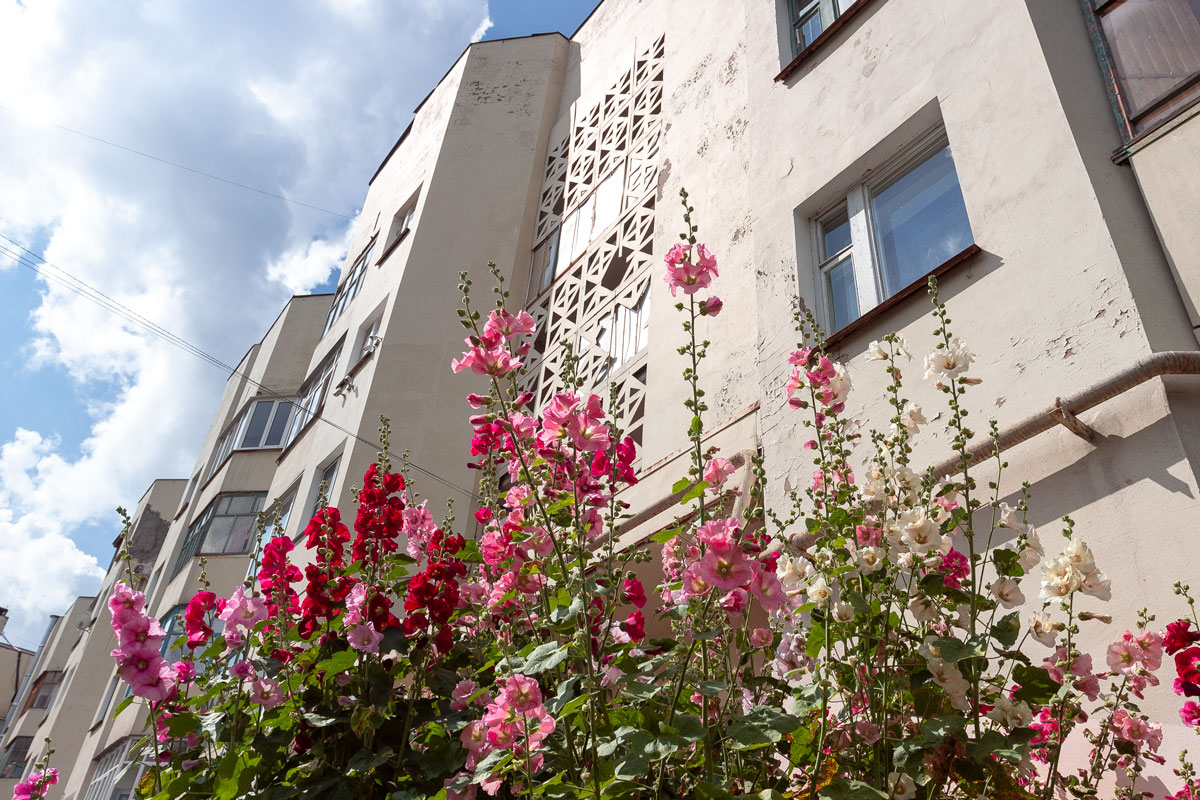
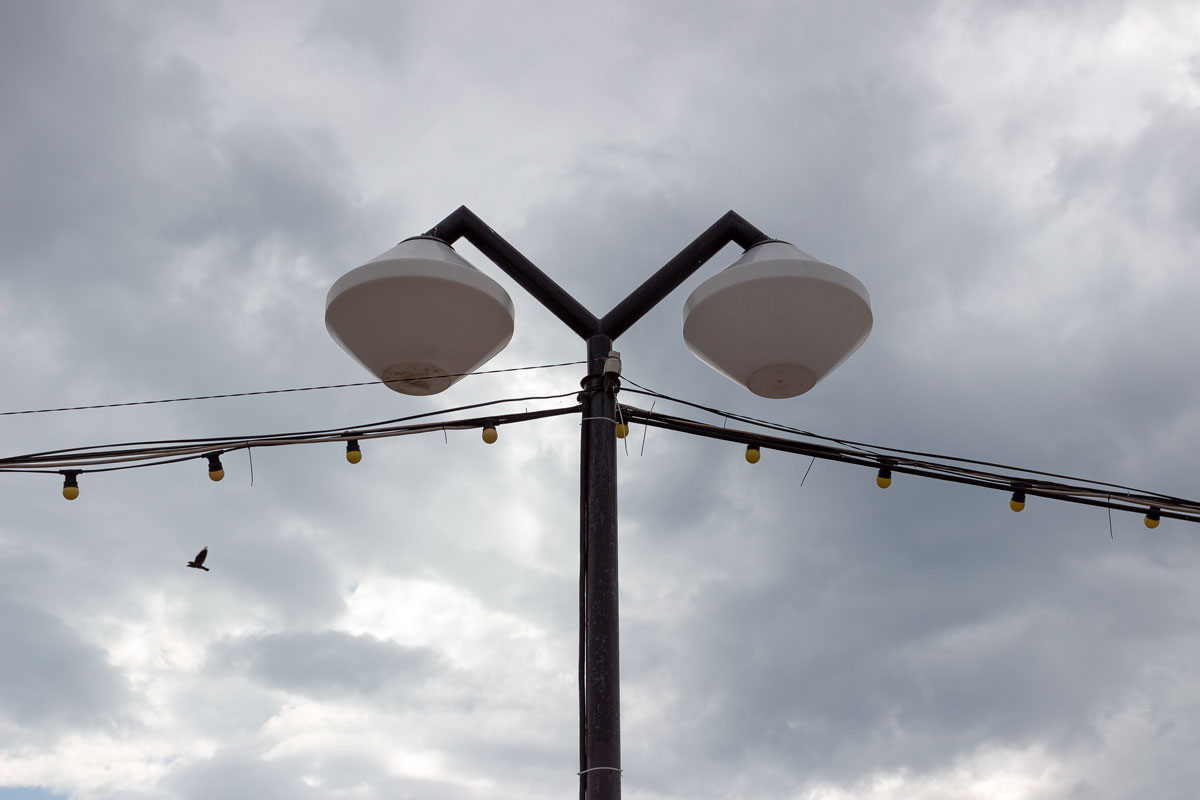
The Chuvash pattern indeed exists; it is even depicted on the flag of the republic.

It would be fitting to imprint this pattern on the foreheads of local officials for such neglect in Cheboksary’s courtyards.
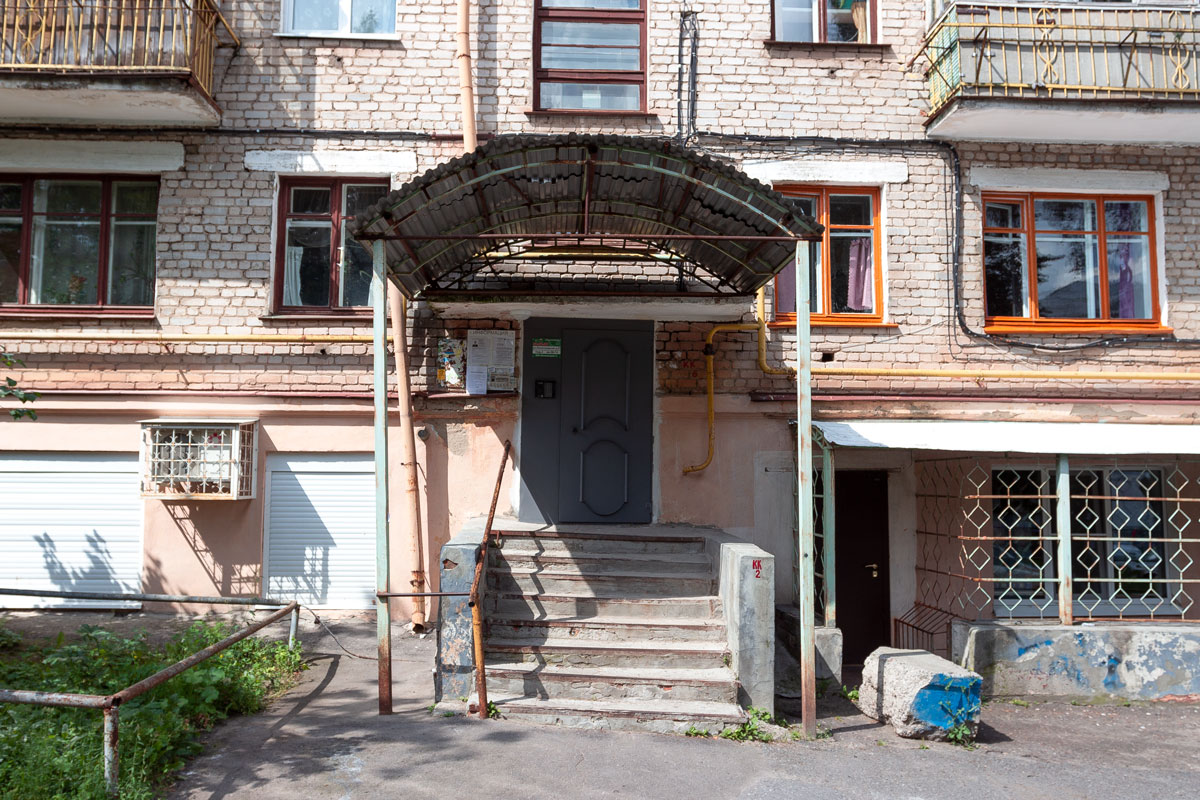
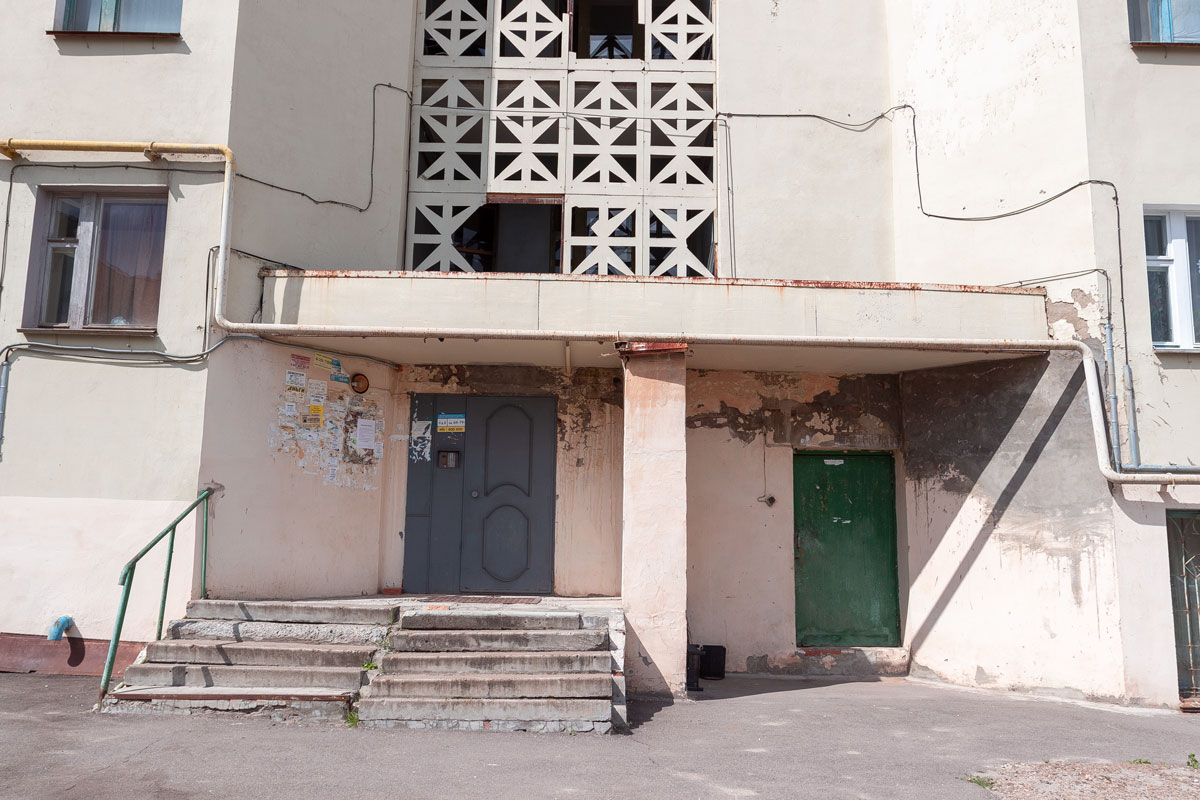
City center.

The same building. You walk through the arch and discover a literary museum on the left and a café on the right. I wonder what was originally planned here? A door to the garbage chute, perhaps?

Hair salon “Enchantress,” sauna “Lagoon.” Oh, this charming rural branding close to the heart.

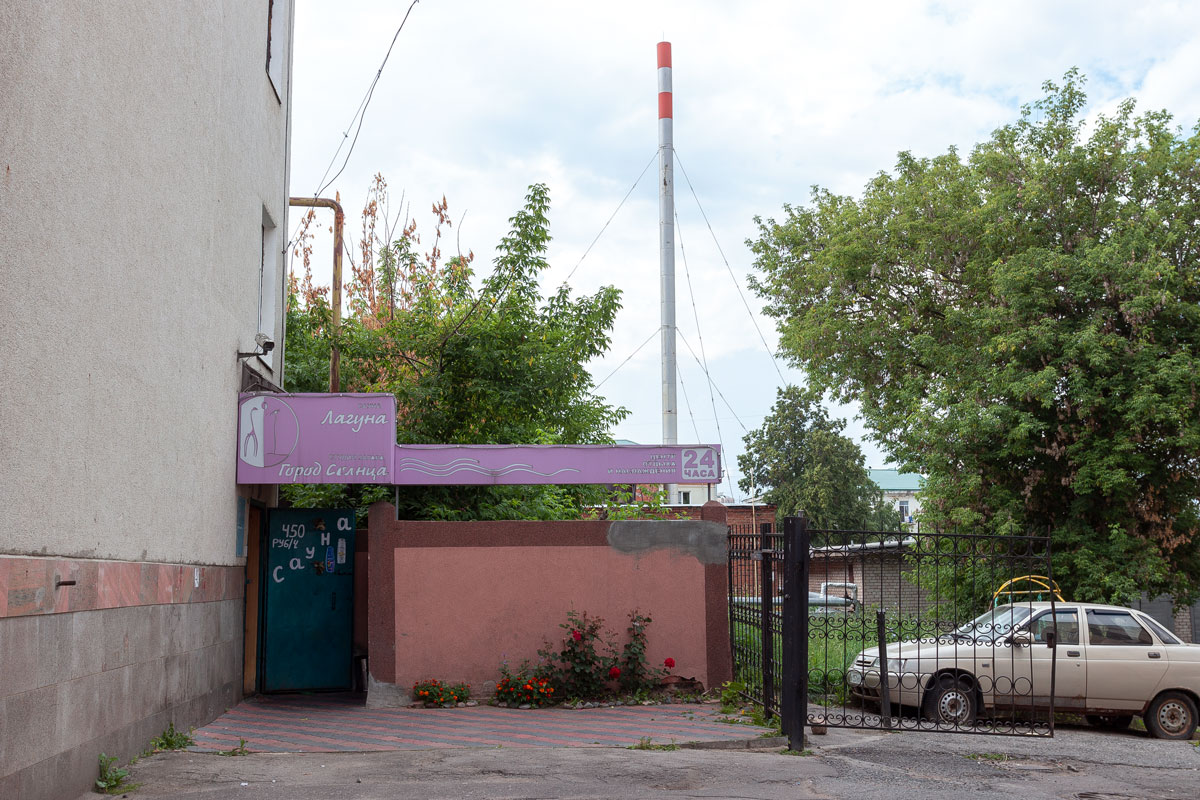
Business center. Inside, it’s probably filled with “Enchantresses,” “Svetlanas,” and “Victories.”

Dilapidation prevails throughout the entire area of Cheboksary, even on the Presidential Boulevard, which was renovated as part of a comprehensive project. After all, roads cannot be repaired just like that; first, a project needs to be announced.
I would name this project “A Plank for Every Road.”
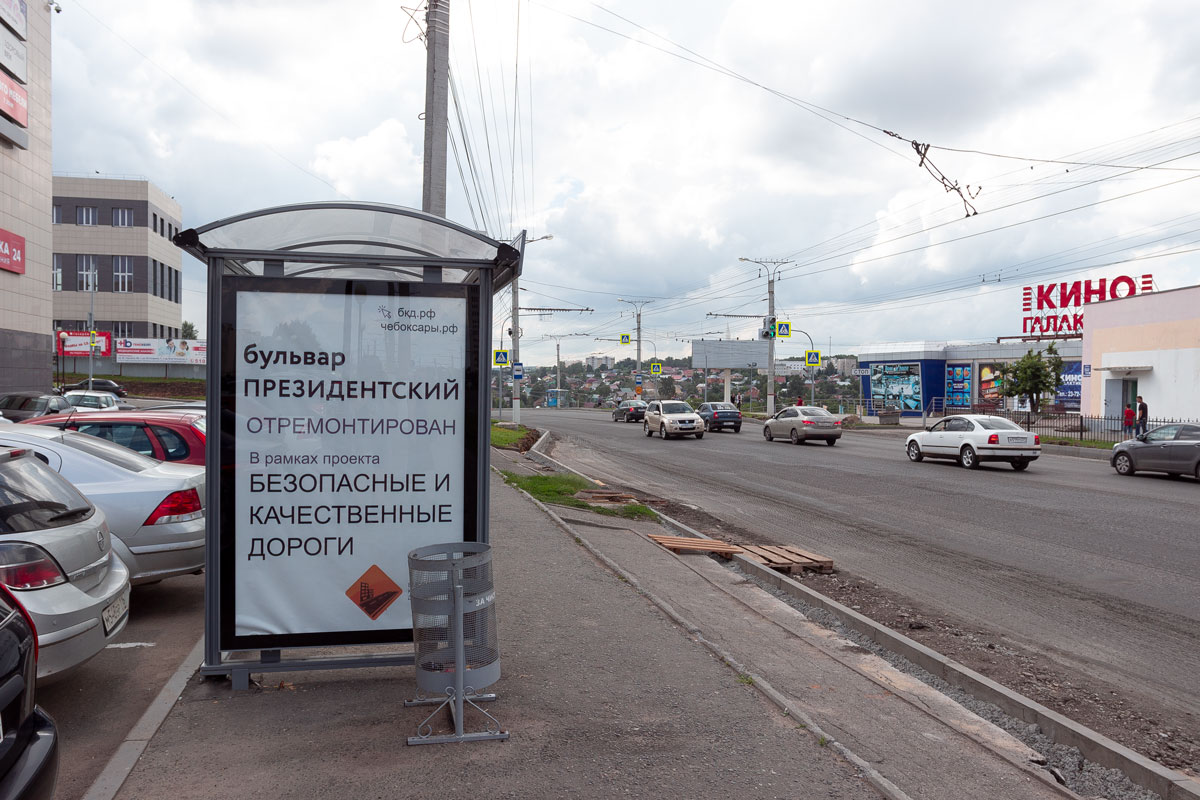
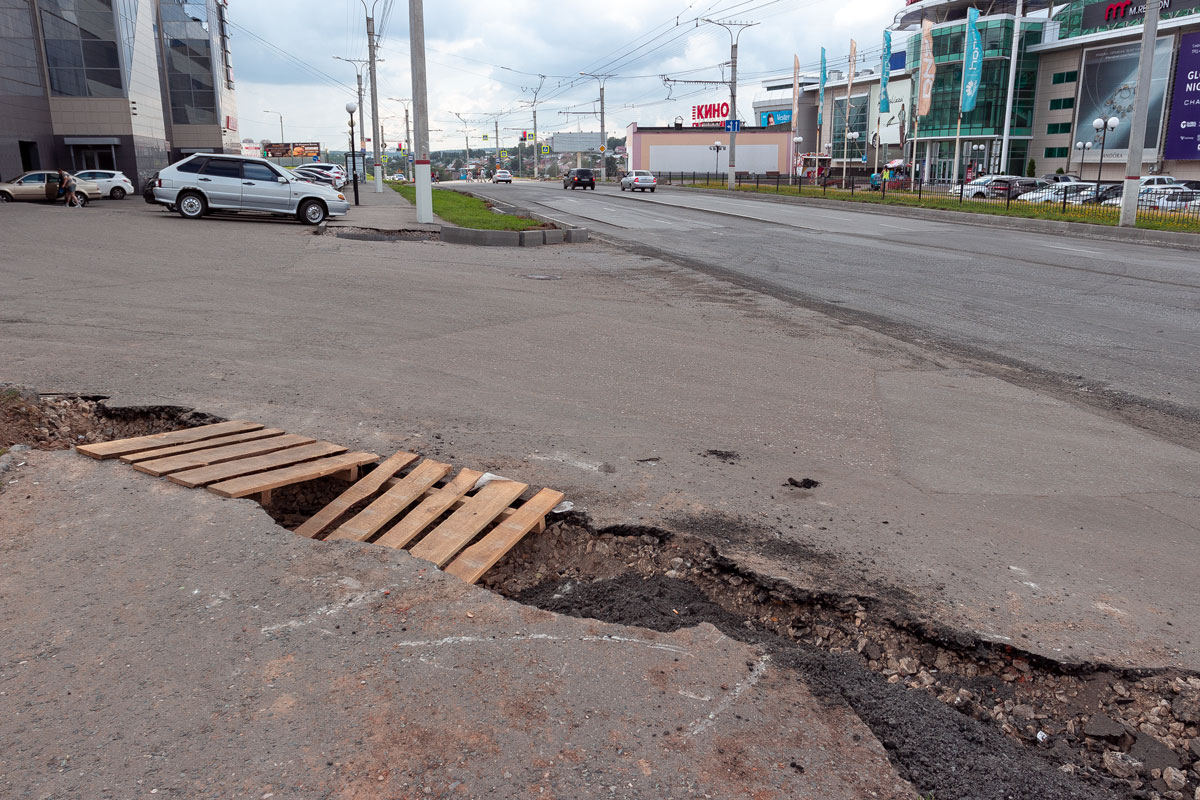
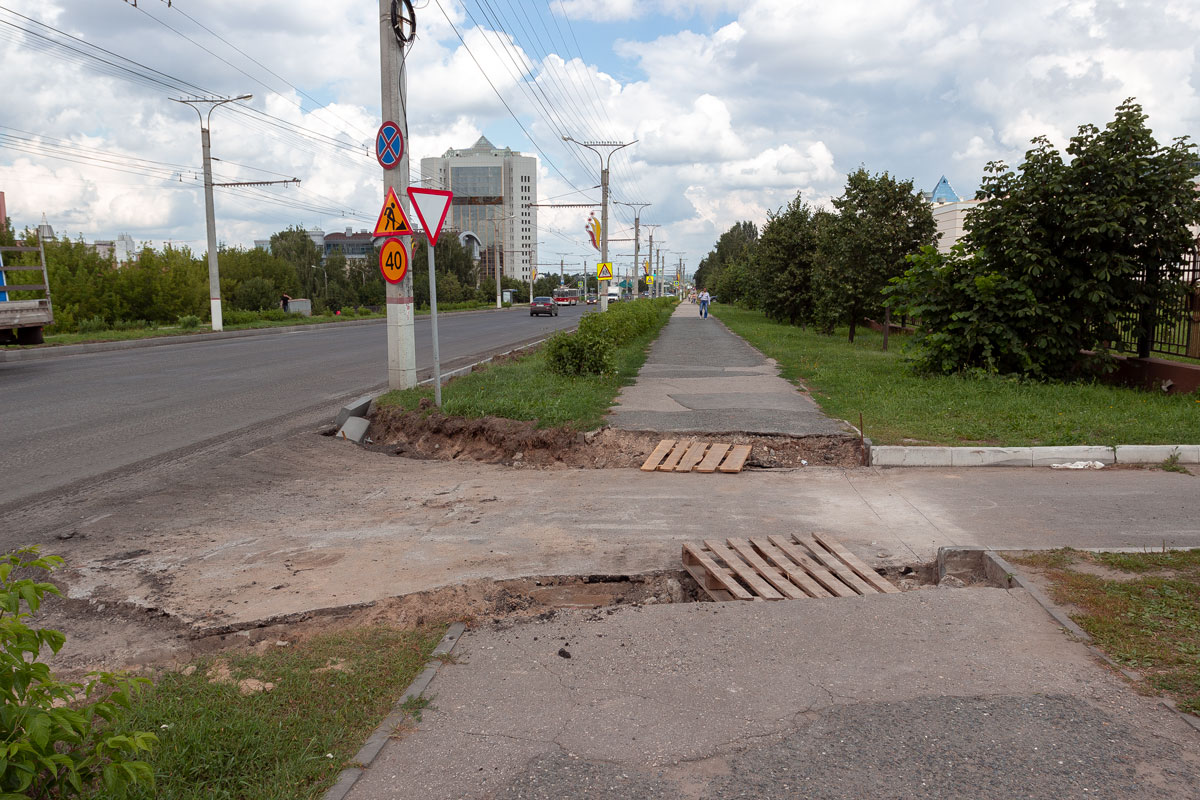
Cheboksary is fortunate in that the city lies on the Volga River, which flows into the “Cheboksary Bay” — a river branch resembling a natural dam.
The waterfront in this part of Cheboksary is a dreadful sight. Poverty, hopelessness.
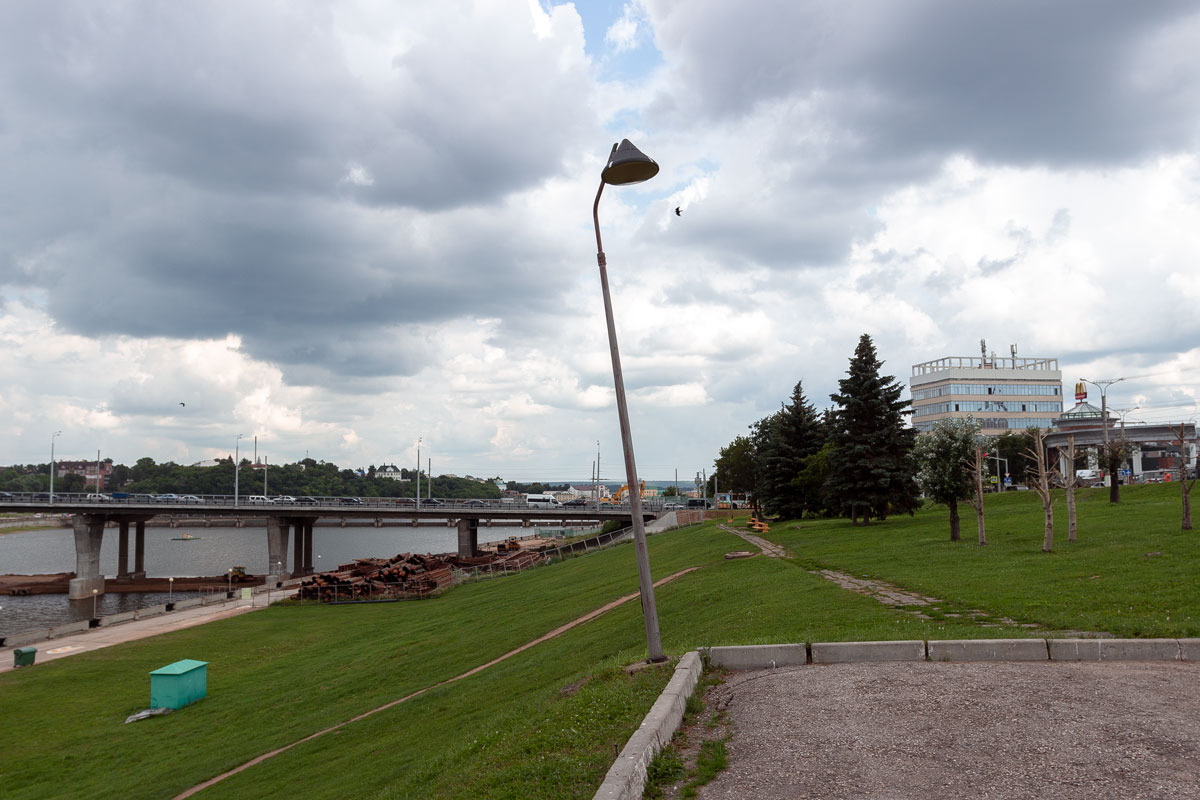
On the opposite bank, a monstrous panel construction already begins.
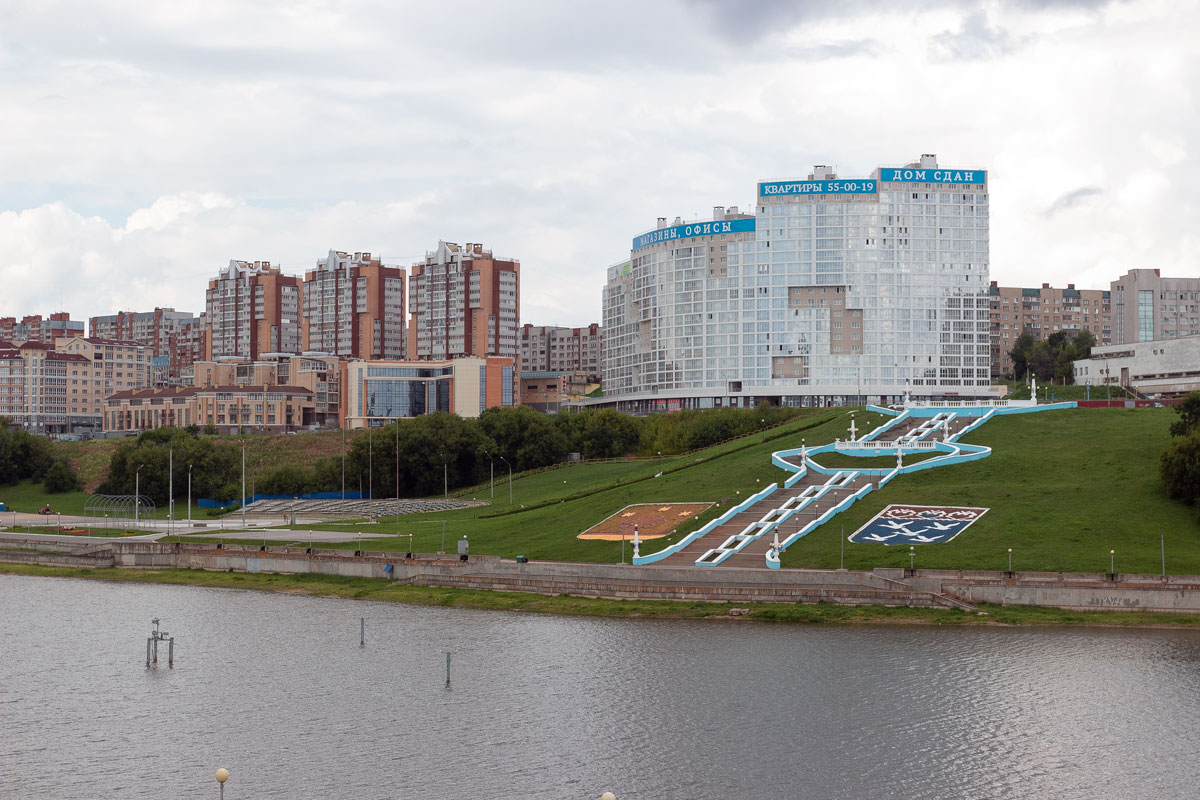
Overall, it is evident throughout Cheboksary that the city has nothing to offer to the world, yet it desperately wants to. That’s why Cheboksary clings to the slightest reason or mention of itself.
It turns out that in the novel “The Twelve Chairs,” Ostap Bender and Kisa fled from the village of Vasyuki specifically to Cheboksary. This fact was enough to warrant a monument for them.
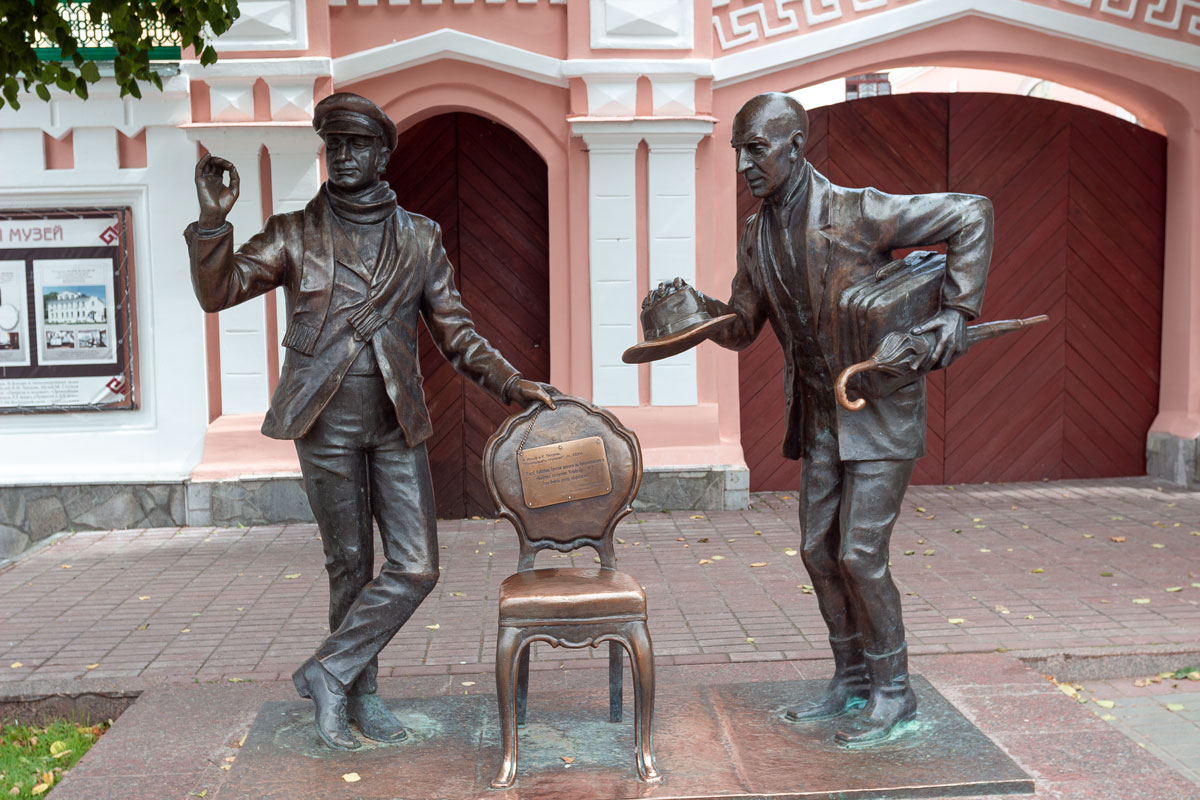
So, where was the second mention of the city? That’s right, in the cartoon “Crocodile Gena.” Let’s make a monument.
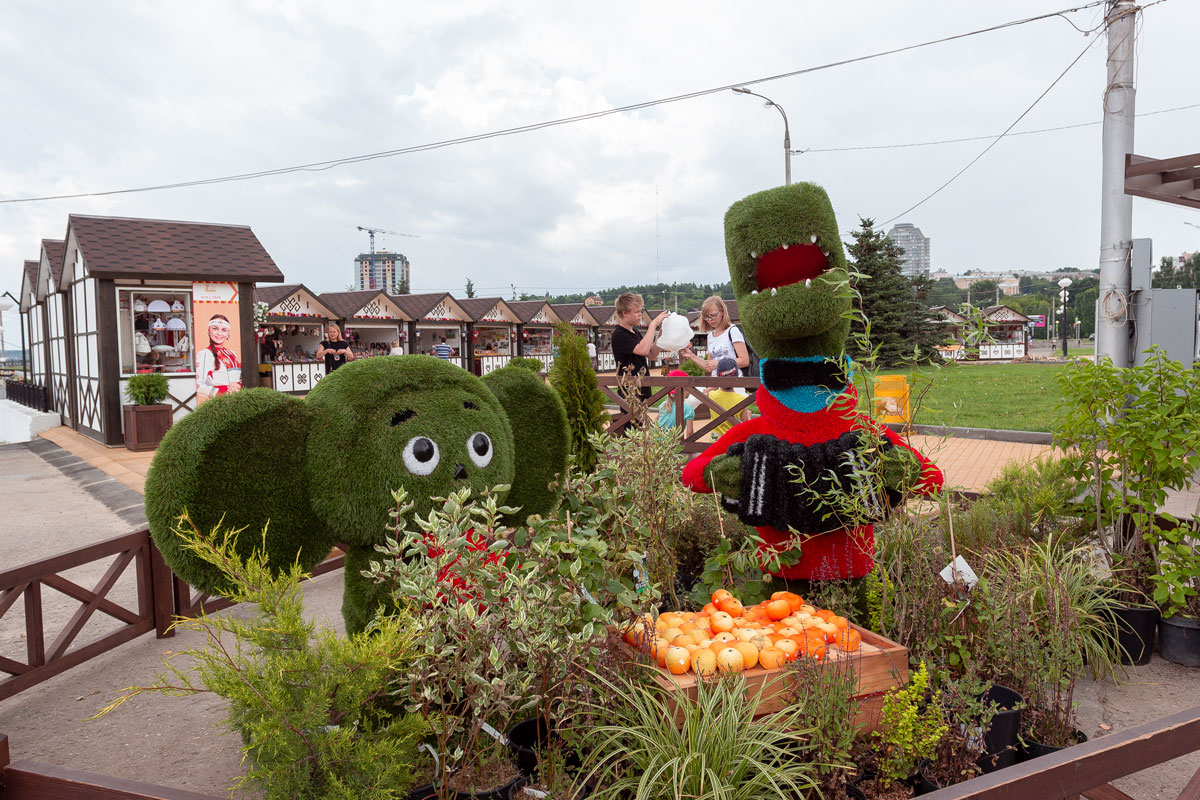
Despite all the provincial horror, I still called Cheboksary a charming city. I won’t back down from my words.
First of all, in Cheboksary, you can eat deliciously and affordably. For example, the café “I Want Dumplings” is designed in a Soviet style reminiscent of the Stalin era.
The interior itself can be touching, but the main thing is that a serving of dumplings with pike and a mug of nuclear mulled wine will cost 300 rubles. It will be cheaper, including the round trip flight, than eating in Moscow.
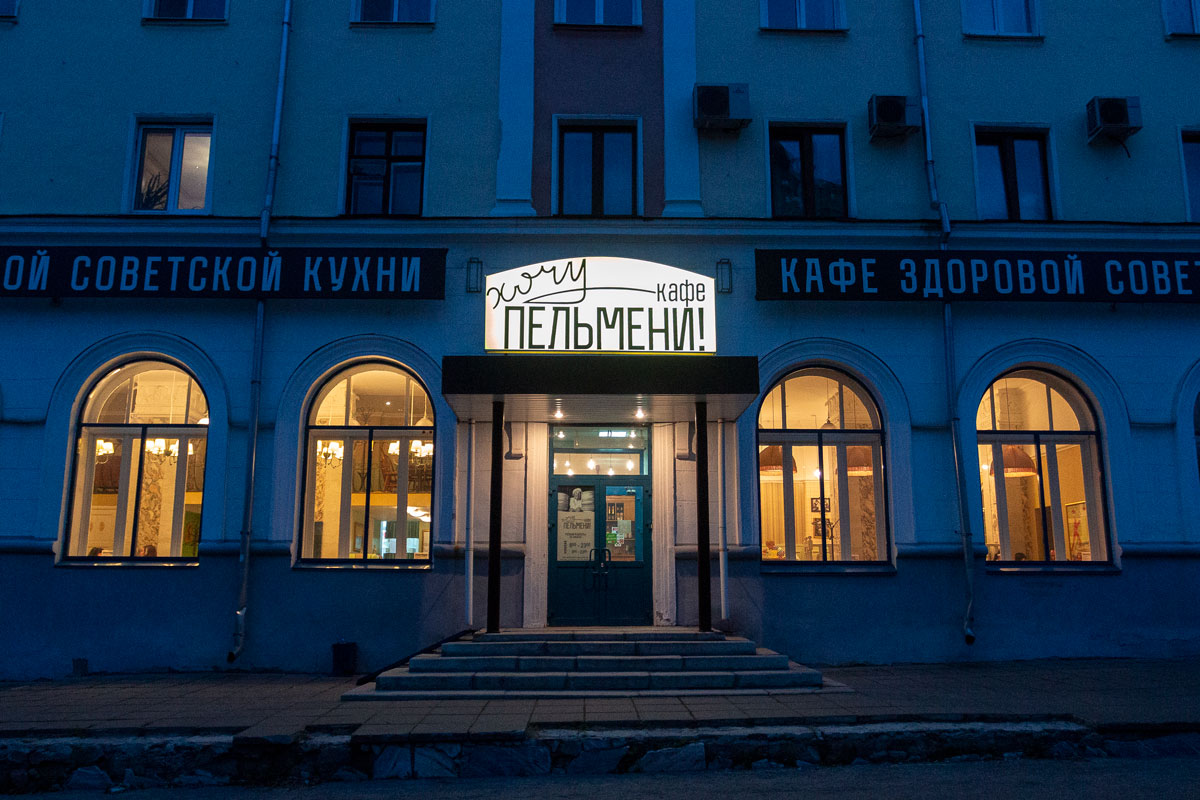
Secondly, in Cheboksary, a lot of architecture from the Soviet era has been preserved. Take the government building, for example — it’s a prime example of Stalinist architecture, one of the finest you can find.

The architecture itself is nothing special, but it seems like I read that this city somehow endeared itself to the NKVD. In any case, the Chekist influence is still evident in Cheboksary. A monument to the red bastard Dzerzhinsky stands near the Ministry of Internal Affairs building.
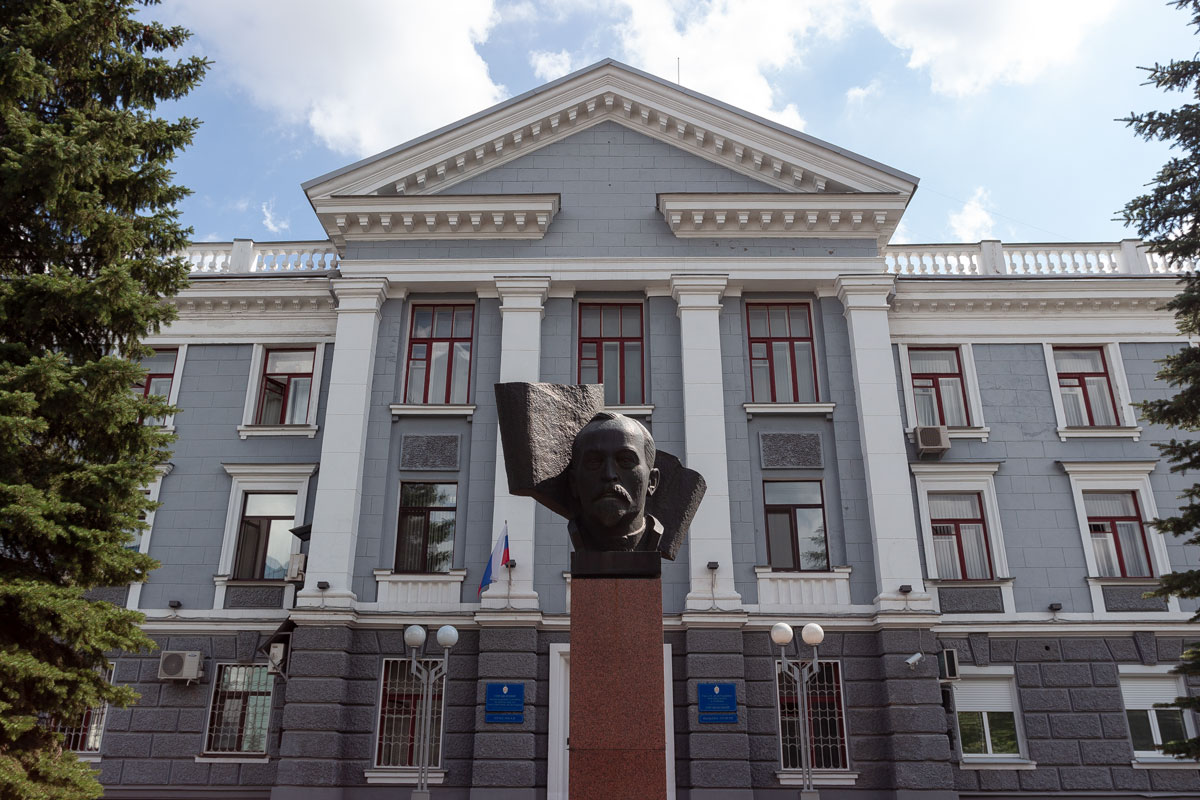
Sometimes the city even reminds me of Minsk: it can be so wide and empty here, as if it has been cleared by special services.

Actually, no. Everyone simply went to the beach by the Volga. It’s understandable: the beach is the best thing in Cheboksary.
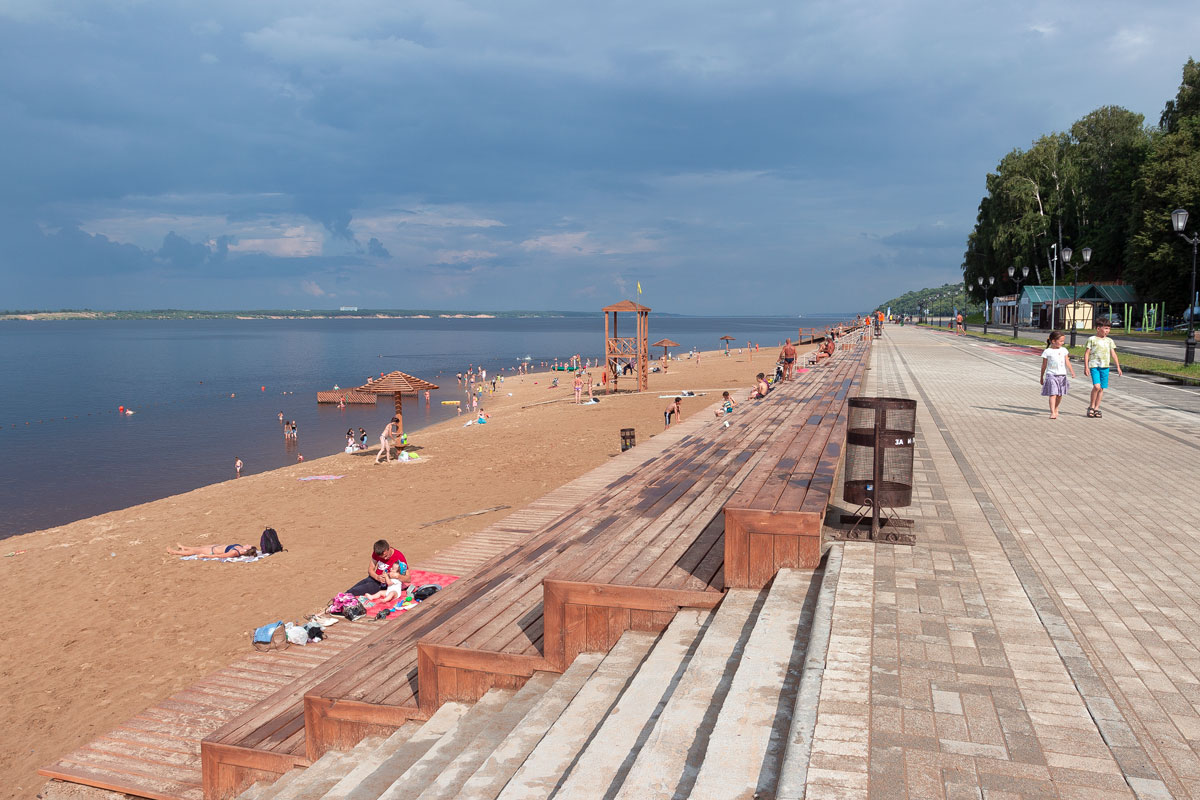
Look at the bliss. If I hadn’t filmed it myself, I would have never believed that such a beach could exist in Cheboksary.
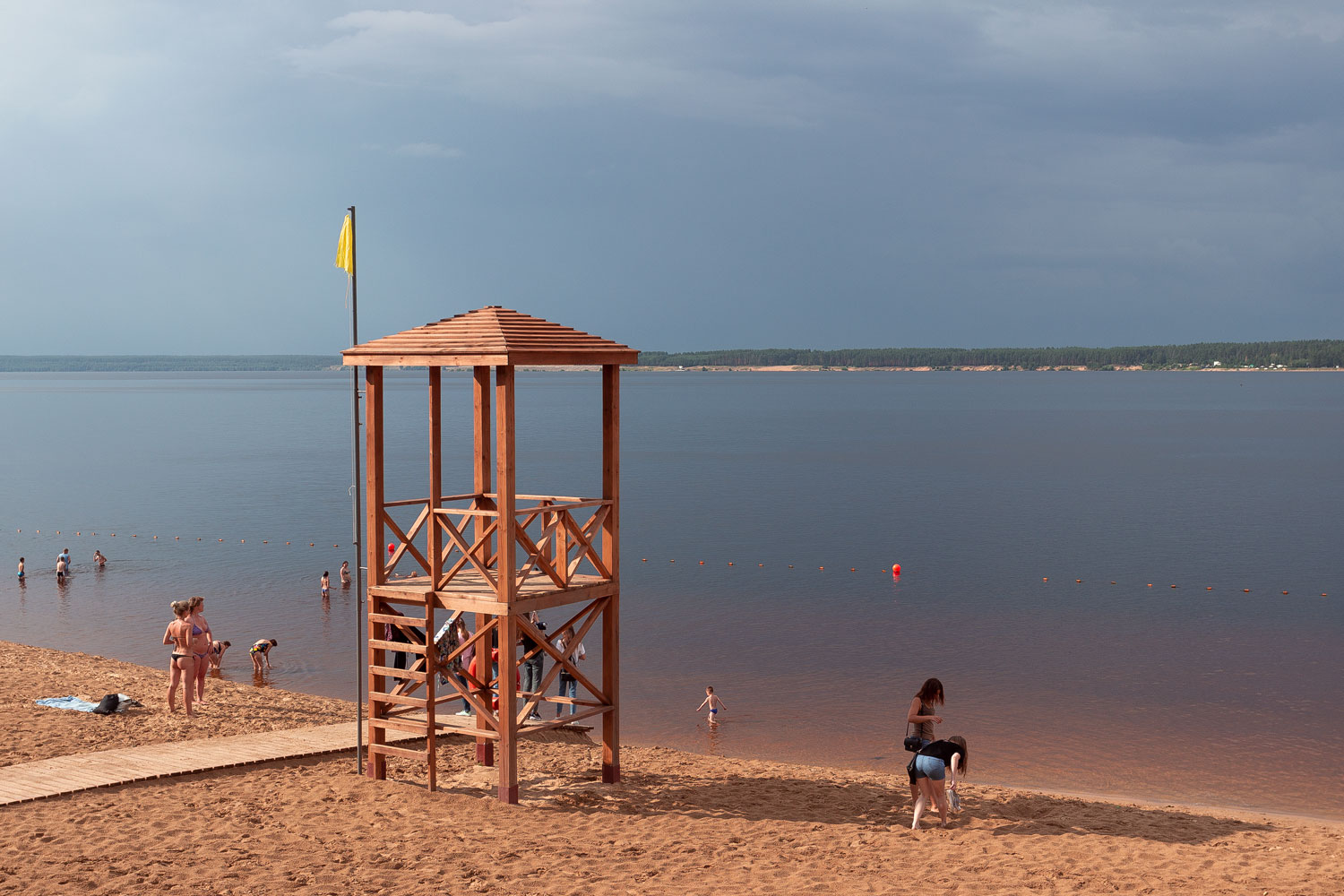
On a hot summer day, after rain and with the right lighting, Cheboksary landscapes evoke an atmosphere reminiscent of the All-Union health resorts and sports culture of the 1930s.

The colors, shimmering puddles, uneven asphalt, desolate emptiness of the landscapes, absence of wires and cars — all of this creates the atmosphere of the city. Welcome back to the Soviet Union!
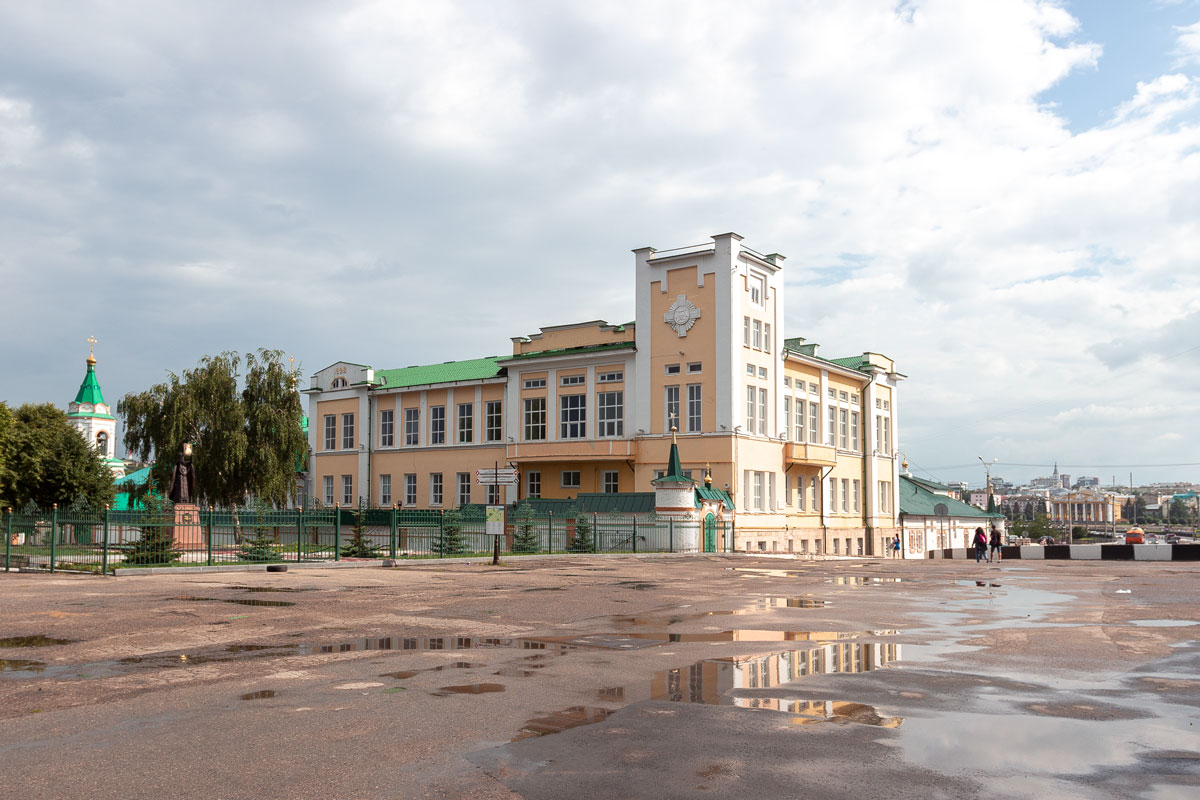
The only thing missing is white sculptures — girls with oars.
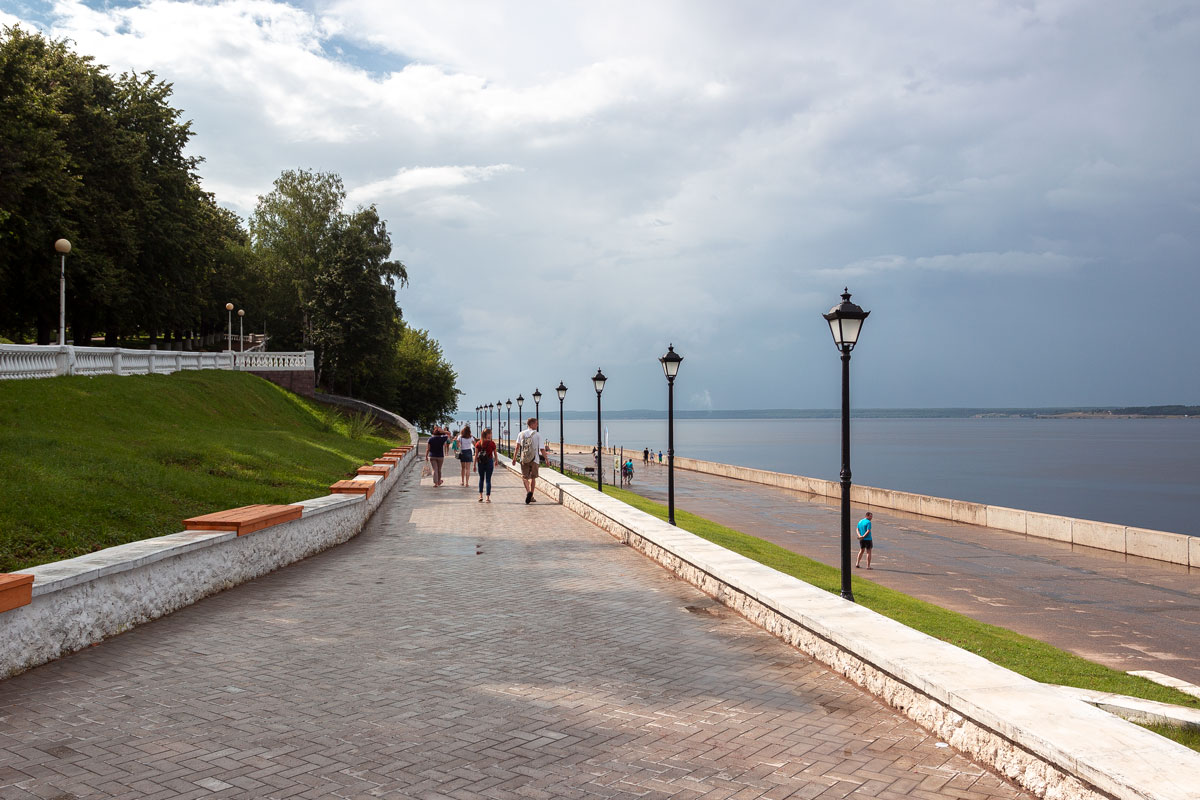
An unimaginable sign for the USSR — “No bathing suits allowed” near the church — as icy water from a bucket reminds us of the era we live in.
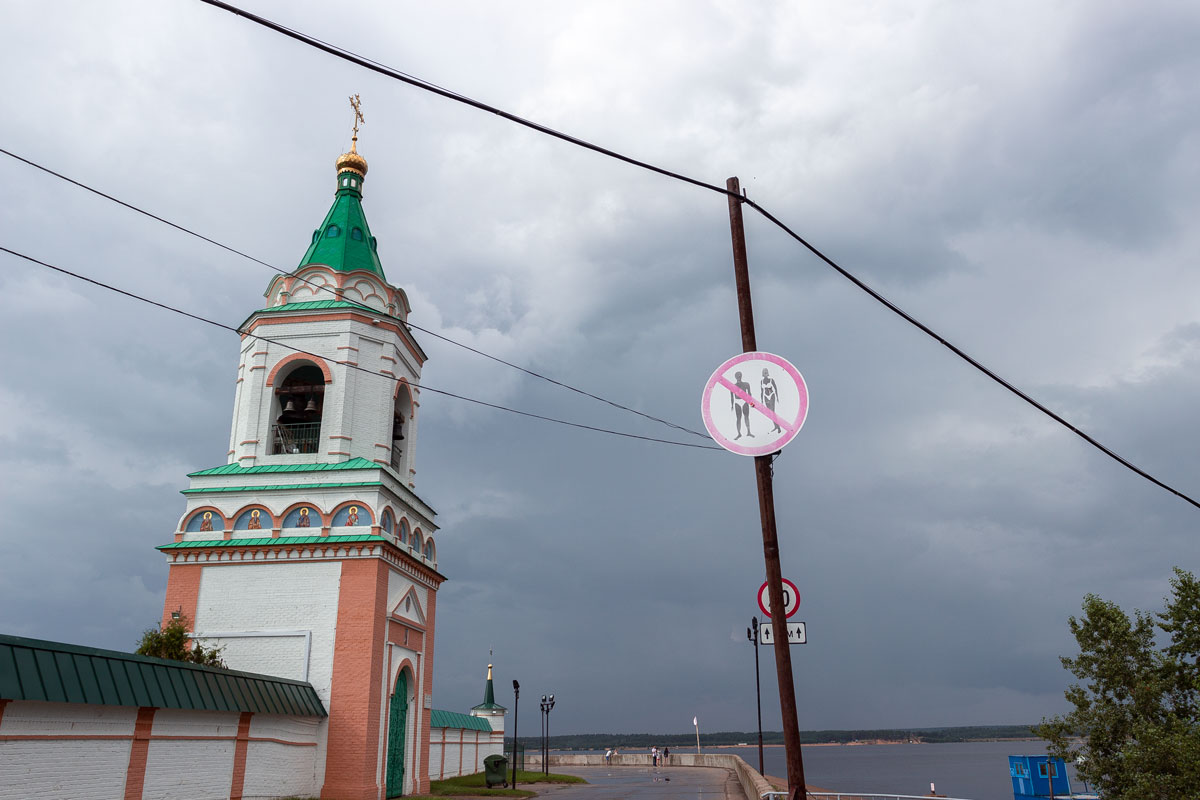
It’s a pity that besides the beach, there is nothing else to do in Cheboksary. Although it is a charming city in some ways, it is still a swamp. Just like the “Cheboksary Bay.” Who came up with such a name for it, I wonder?
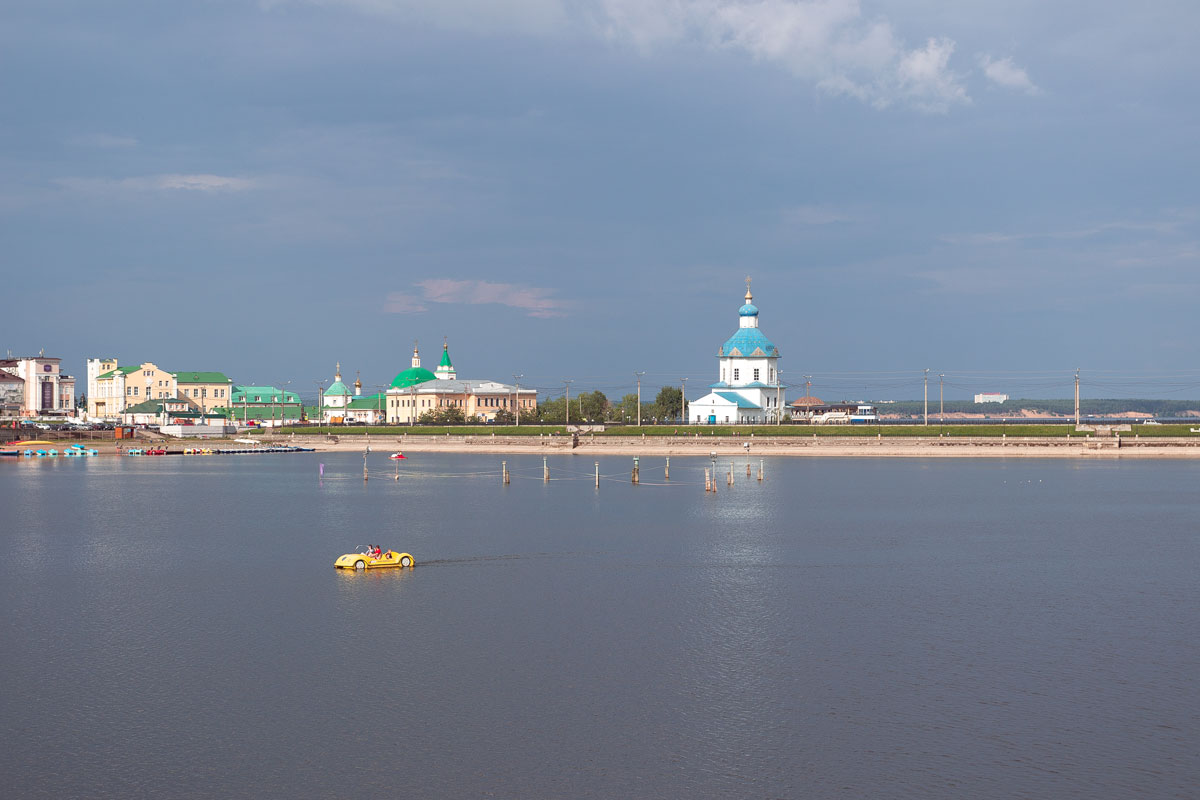
On free days during the non-summer months, which amounts to more than nine months a year, there is really nothing to do in Cheboksary. The only attraction besides shopping centers is the Cheboksary replica of the Christ the Redeemer statue from Rio de Janeiro. It is actually a monument to the Mother.

Well, in general, everyone here just drinks on New Year’s Eve.
